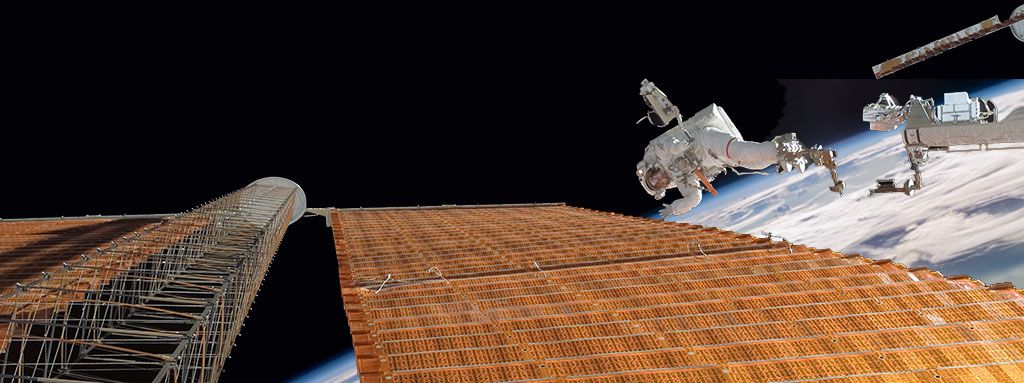It is unquestionable that aeronautics has not only made a contribution to globalisation by improving air transport on a daily basis, but also that it is one of the main pillars of the scientific, technological and industrial developments which will improve many aspects of life on Earth.
A solar farm in space could be between 5 and 10 times more efficient than a solar farm on the Earth’s surface.
Space is, without doubt, one of the aeronautical engineering fields which will have the greatest potential for growth and development over the coming years. The aim is not only to try to use the capacity of aircraft to reach further and conduct research beyond the confines of our solar system, but also it is becoming increasingly feasible to start up large projects to exploit space mining, tourism, exploration bases or other initiatives which are of great interest and complexity.
For example, in terms of the great potential of solar energy and how we can improve this renewable resource’s use, there is an innovative project conceived in Japan.
The solar energy we make use of on a daily basis is fairly dependent on the prevailing weather conditions at the point where it is collected. Based on the idea of making maximum use of the sun’s energy, the Japan Aerospace Exploration Agency (JAXA) has taken the decision to conduct active research and development on SPS (solar-powered satellites) in order to create an enormous solar farm in space and thus ensure energy supplies to our entire planet.
This project essentially consists of creating a satellite-like solar farm in space measuring several square kilometres comprised of “floating” solar panels which are connected to a point on Earth. Said satellite would be kept in a geostationary orbit. The JAXA’s estimates suggest it could be between 5 and 10 times more efficient than a solar farm on the Earth’s surface due to the fact that it would be able to collect the sun’s energy directly without any of the interferences caused by the atmosphere. It would thus reduce the incidence of the seasons and the darkness of night.
The only way envisaged to bring this energy to Earth is through wireless technology. The JAXA has pointed out that the only development alternative for this is by means of microwave technology. Laser technology was discarded, since there is presently no way to make it work efficiently through clouds.
The journal PhysOrg has recently published that the Japanese company Mitsubishi Heavy Industries – a partner and collaborator of the JAXA project – has managed to send 10 kilowatts through microwaves to a receiver located at a distance of around 500 metres. This is only an initial step. For the time being, the JAXA and Mitsubishi are moving forward in the high-precision wireless transmission of energy and focusing their efforts on attaining an efficient system which does not generate energy losses along the way. Only thus can this project become commercially viable.
The JAXA hopes to test its technology in space in 2018 with a small satellite capable of transmitting several kilowatts. By around 2031, it then hopes to have a pilot plant available that is capable of generating a gigawatt of energy, which is expected to be ready to operate in space by 2040.
Can the large energy industries reinvent themselves in response to an advance like this? Aeronautics is already doing so.



